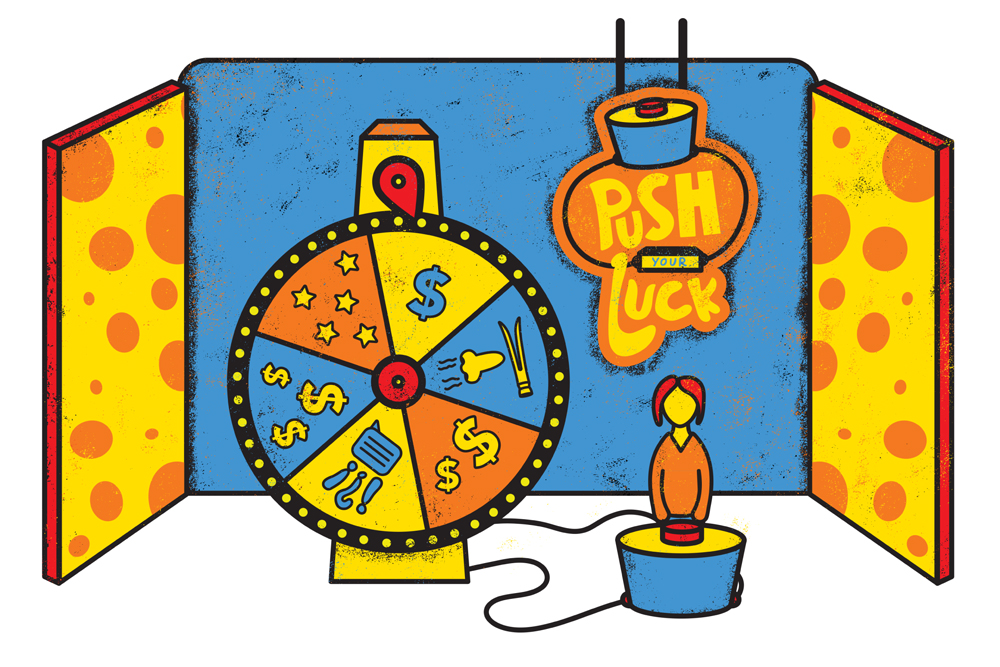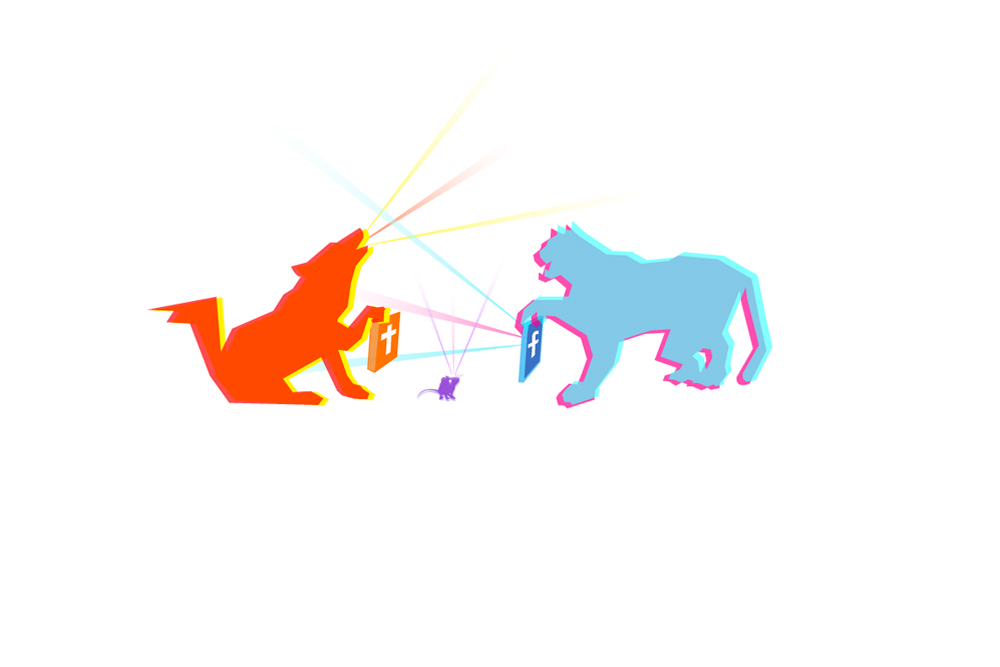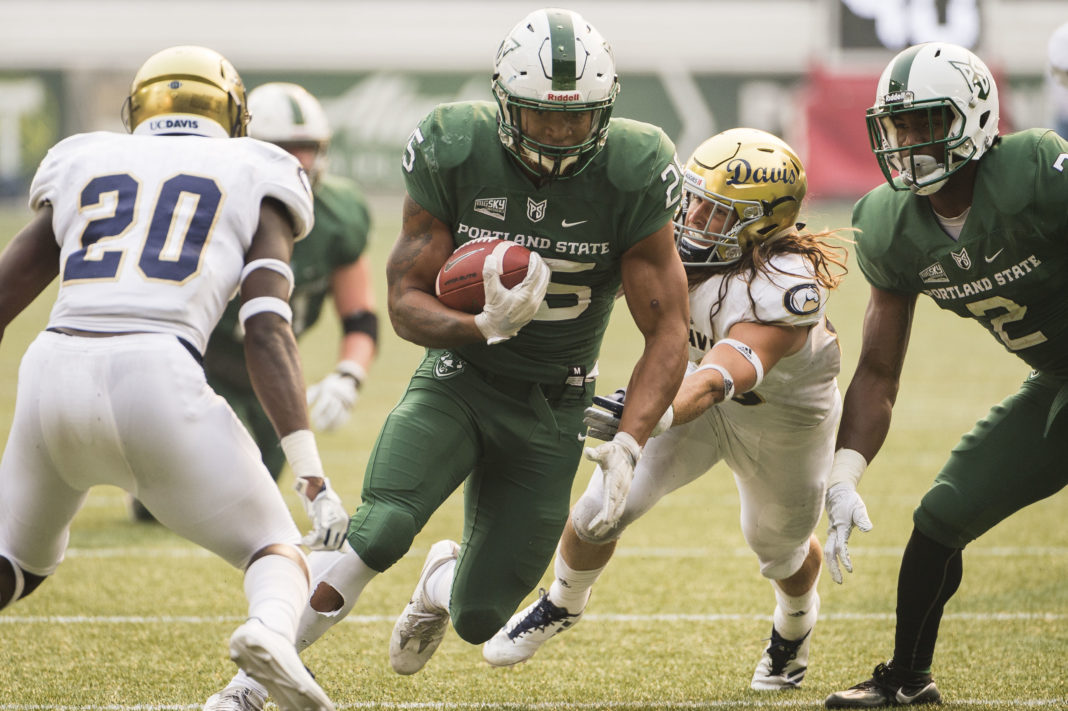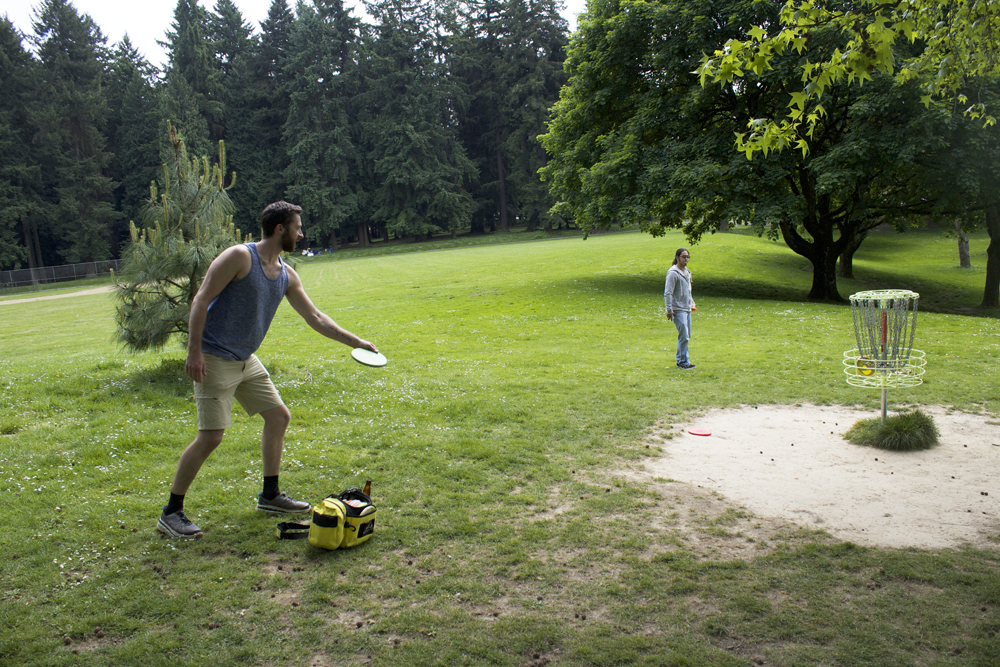The normally crowded Powell’s books was quiet on Thursday night, but three stories up people slowly drifted into the Basil Hallward Art Gallery. By 7 p.m. the laughter of friends hugging and chatting filled the space. Fifteen minutes later Loretta Stinson-Rosenberg stood behind a huge podium of carved wood.
She began with thanks, and the crowd gave her their silent attention while she read her short story “Winter Coat.” Behind her was a variety of art inspired by her story.
Ben Rosenberg’s Winter Coat art show opened at the Powell’s Books art gallery on Feb. 5 and will run until March 31. Rosenburg’s wife, Portland State professor Stinson-Rosenberg, wrote the short story that provided the inspiration for the multi-artist collection.
The show was unique in that it was not focused on one artist, but a collaboration of many artists, all using one short story as inspiration for their pieces. The result was an innate connection between the works, but each very different from one another at the same time.
“The beauty of collaboration is that it’s not all about me,” said Stinson-Rosenberg. “It’s not all about him. It’s about the collaboration between all of us.”
“Winter Coat” is a story about Ruby, a woman who is married to a drug addict. In a moment of inspired sewing, she takes his coat from the closet and finds a syringe in the pocket. What this means and what she must do becomes real to anyone who has been put in a place that they do not want to accept.
Stinson-Rosenberg described the focus of her story as “when you know something you don’t want to know.”
“[When] you finally can’t deny the truth,” Stinson-Rosenberg said. “You run up against the truth and there is nowhere to go.”
Ben Rosenberg, the curator of the project, graduated from PSU with a master’s in Fine Arts in 2007 and is now an adjunct professor of various art courses at Clark County College and Clatsop Community College. He was asked to curate an art show in Astoria, which catalyzed the idea to do a show not centered on anyone, but stemming from one place: a short story.
“I feel that’s how a group show should be,” said contributing artist Mike McGovern. “A wide range of artists from different backgrounds and talent with diversity in the imagery and the processes.”
It is a well-known secret that writers should read their work aloud to check it for errors and to make sure the grammar fits their voice. Stinson-Rosenberg would do this with her husband, and it was in this way that he first heard the short story. It stuck in his mind.
“I was so intrigued by the voices and feelings about what was going on in Ruby’s head, the unknown, yesterday, now, tomorrow,” Rosenberg said. “How does an artist bring this out—what part, and why?”
Rosenberg sent “Winter Coat” out to a diverse group of artists including painters, photographers, printers, mixed-media artists, sketchers and sculptors. Thus there are many art styles represented in the show, taking form in a variety of responses to the story.
“I just let them go for it,” Rosenberg said. “I knew their way of interpretation and if they surprised me in a different way of working, well, I thought, so be it. Here it is.”
Of the artists, two were PSU professors. Horia Boboia and Mike McGovern both teach art at PSU. Boboia teaches painting and McGovern teaches printmaking.
“Ben was my student here at PSU and since then we remained friends,” said Boboia. “I also knew [Stinson-Rosenberg], the writing half of this collaboration, and another PSU alumni. I was happy to see them both working together. Meanwhile, there are other artists in the show I know and admire.”
While many artists focused on different aspects of the story, Boboia’s piece focused on the last sentence of the story.
“The last sentence of the story becomes a very short story in itself, while its visual counterparts provide a stage for contemplation,” Boboia said. “Where one story ends another begins.”
McGovern created three mixed-media pieces for the show.
“After reading the story I felt a strong connection to it, and it proved to be a new, exciting challenge in my art that I might not have explored otherwise,” McGovern said. “Printmaking is a very collaborative and community-based art form, so this opportunity to work with another artist’s words really fit into my process.The show is unique; I haven’t participated or seen a show like this before.”






